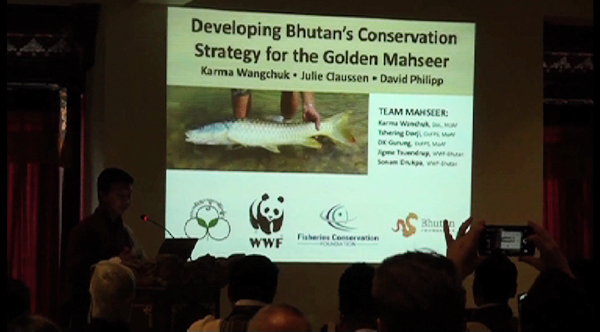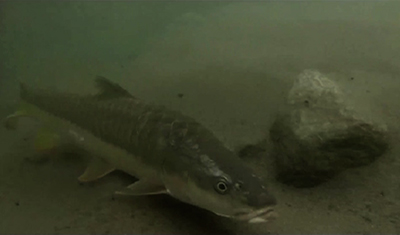 The endangered fish species, golden Mahseer is found in the major rivers of Southern Bhutan. However, the population of the mahseer is severely threatened by illegal fishing in the country.
The endangered fish species, golden Mahseer is found in the major rivers of Southern Bhutan. However, the population of the mahseer is severely threatened by illegal fishing in the country.
The Mahseer Research and Conservation Project in Bhutan, for the last four years, has been tracking the fish along the Mangde Chhu and Drangme Chhu, studying their migratory pattern.
“We surgically implanted radio transmitters inside adult mahseer and with the listening stations on the river we tracked their movements throughout the year. Adult mahseer can migrate up the river 90 or 100 kilometres may be in just one or two days to spawn in tributaries and they move down in the winter but don’t migrate to India. Most of them stay in Bhutan,” David Philipp, the Chairman of the Fisheries Conservation Foundation in the US, said.
It is the first research study on mahseer in Bhutan and first radio telemetry study in the world.
“There is a lot of illegal fishing going on in Southern Bhutan. We studied in the Manas river system and the illegal fishing is extremely high, probably right now the number one threat to Mahseer,” David Philipp said.
 During the research, the team also discovered the presence of chocolate mahseer as well and conducted the research accordingly.
During the research, the team also discovered the presence of chocolate mahseer as well and conducted the research accordingly.
Today, with several dams constructed in the Himalayan region, it is feared that the number of mahseer may even decline by 80 per cent in future.
The hydroelectric dams in the country also impact the migratory routes of golden mahseer.
“The moment you put up a concrete structure in a free-flowing river and you are obstructing the migratory fish. We need to study and scientific data to help us to develop mitigation measures that would go hand in hand,” Karma Wangchuk, the Fish Biologist at the National Center for Riverine and Lake Fisheries in Haa, said.
According to the World Wildlife Fund (WWF), the rivers of southern Bhutan are the greatest hope for survival, as long as actions are taken soon to minimize threats.
At the first International Mahseer Conference held in Paro, scientists from 11 countries recommended the establishment of community-based conservation and initiating recreational fishing in Manas and its tributaries to control illegal poaching.
“A golden mahseer alive in the river is worth a lot more to Bhutan, to the river than a dead harvested one as a piece of food. To develop the economic importance of the live fish, one-way is to establish a high-end recreational fishing,” David Philipp said.
According to the Living Planet report 2018, the freshwater fish have had the highest extinction rate in the 20th century.









